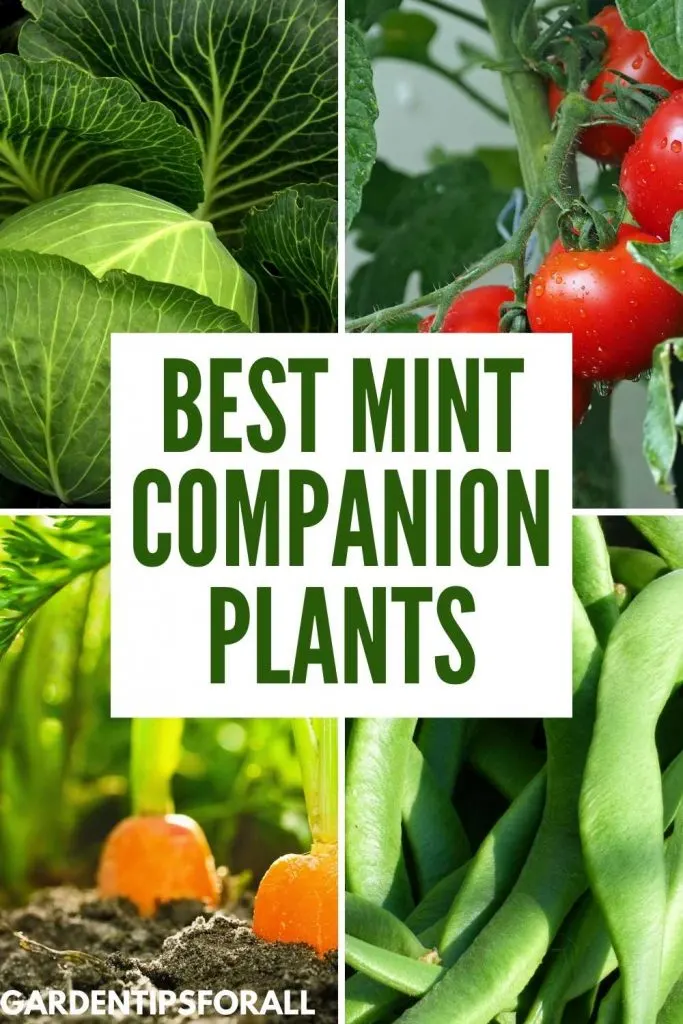12 Best Mint Companion Plants (What to Grow with Mint)
Mint is a great companion plant for a number of different vegetables. In this article, we discuss what to plant with mint and plants you should not grow with mint, plus the various types of mint.
Smart gardeners often take care when planning their gardens, choosing companion plants for their fruit, vegetable and even flower crops.
Companion planting provides a number of benefits for any garden, including repelling pests that will attack certain plants and boosting pollination.
In addition, companion plants can help protect the soil preventing the depletion of certain minerals and in some cases can actually increase the yield of certain plants. So you may be wondering, what grows well with mint?
Mint is an aromatic herb that has a fruity sharp scent and taste. It is a fairly easy plant to grow and grows in both full sunshine and in partial shade. It is also one of the best aromatic herbs to grow indoors.
Mint has roots that tend to spread and can choke the roots of some other plants. So you need to be careful when deciding what other crops to plant as companions to mint.

Related Articles:
- 10 Good Companion Plants for Rosemary
- 12 Best Companion Plants for Basil
- 13 Best Companion Plants for Sage
- 15 Good Companion Plants for Thyme
- What to Plant with Oregano
What to Plant with Mint – 12 Good Companion Plants for Mint
There are several plants that mint pair well with to either protect other plants from pests or to attract pollinators to the plants. Here are some good mint companion plants.
Oregano and/or Marigolds
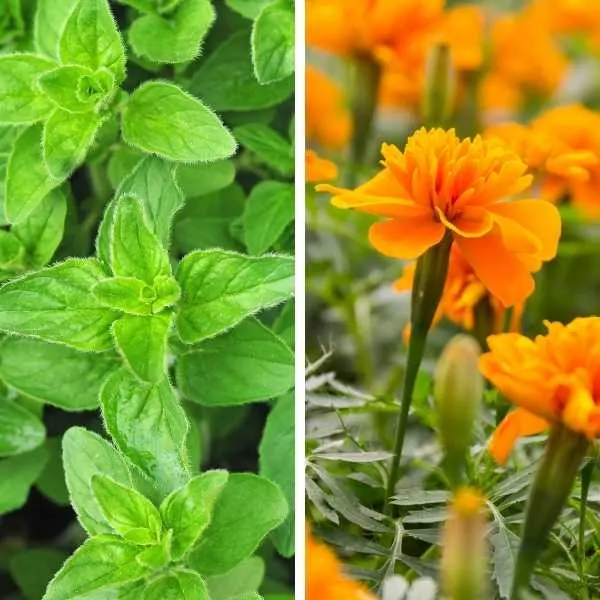
When you plant mint, oregano and marigolds near to each other, these plants create a strong aromatic scent that can protect your entire vegetable garden from all types of pests.
Because mint roots can spread, it is best to plant your mint in containers and set the containers around the parameter of your garden.
Carrots
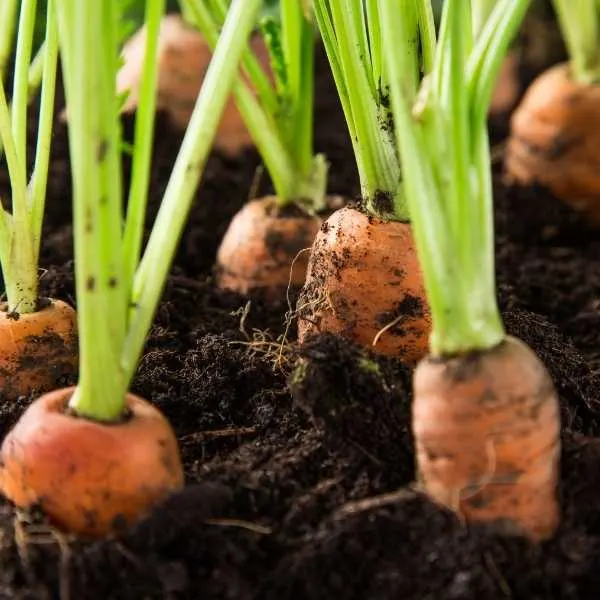
Carrots are popular vegetables for most home gardeners, but these vegetables are susceptible to carrot flies, which can destroy your carrot crop. Planting mint near your carrot plants will prevent carrot flies from attacking your carrots.
Cabbage, Cauliflower and Kale

Cabbage and kale are leafy vegetables and cauliflower has leaves much like cabbage leaves. These vegetables are staples of many gardens but like other garden vegetables can be attacked by pests.
Cabbage moths and flea beetles tend to chew on the leaves of these plants, but when mint is planted near these vegetables, it discourages these pests from getting near the plants.
Lettuce
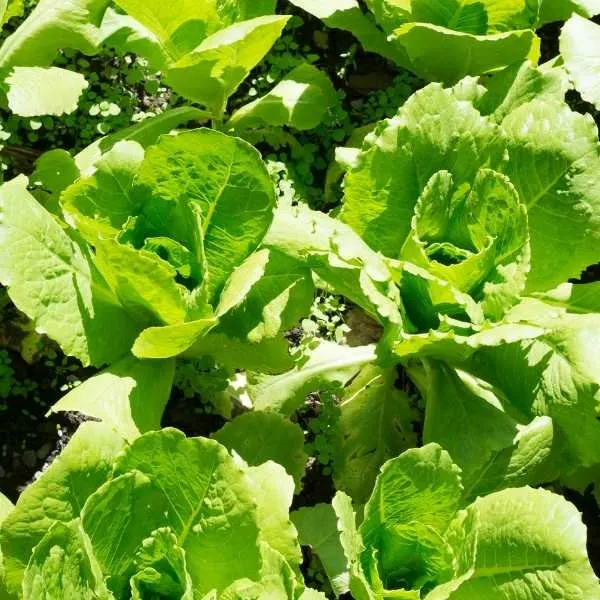
If your family loves salad or lettuce wraps, then you may want to grow lettuce in your garden. Lettuce is one of the fast growing vegetables that are easy to grow too.
Unfortunately, humans are not the only creatures that love lettuce. Slugs, grasshoppers, armyworms, certain beetles, rabbits, mice and deer all like lettuce as much as you and your family does.
Mint planted near your lettuce will help to keep most if not all of these pests away.
Tomatoes
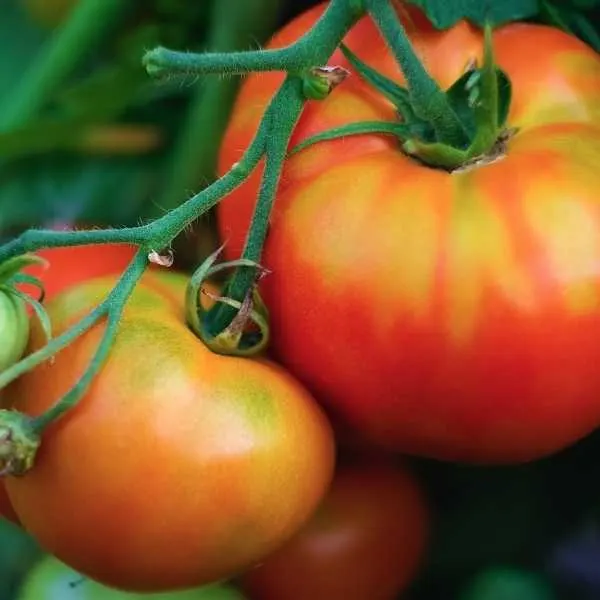
Tomatoes are fruits that are usually treated like a vegetable and is another popular plant in most home gardens.
Aphids and spider mites can wreak havoc on your tomato plants (and eggplants as well.) However, the strong scent of mint works as a natural repellent for both aphids and spider mites.
Onions
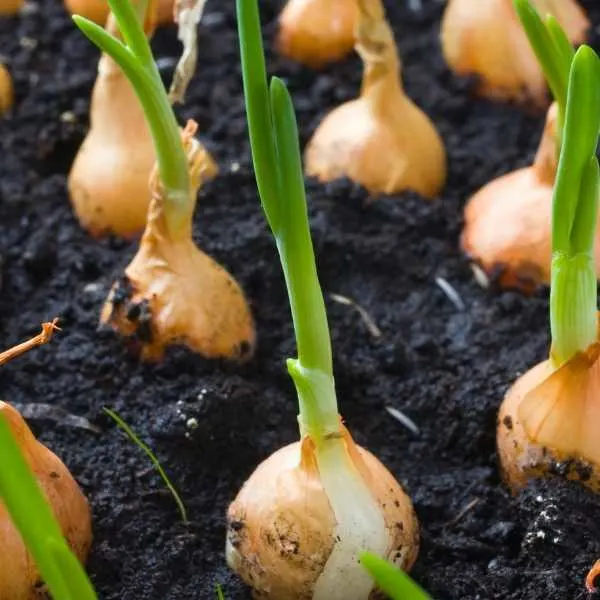
Onions are one of the most versatile vegetables on the planet and a staple in almost every home.
Onions are served raw on salads, hamburgers and hot dogs. Cooked in casseroles, soups, and sauces, French-fried as snacks or side dishes and so much more.
Best of all onions are fairly easy to grow, making them the ideal crop for both beginner and experienced gardeners.
However, onion flies can quickly deplete your onion crop. But when you plant mint (in a separate container) near your onions its strong scent prevents onion flies from feasting on your onions.
(You may also want to read this article to find out if you can grow onions in 5 gallon buckets).
Peas, Beans and Corn

Herbivores like mice and deer love to raid your garden and enjoy munching on many of your vegetables like peas, beans and corn.
The good news is that when you plant mint near these vegetables these animals find the scent of mint highly offensive. So, they tend to avoid areas where this herb is grown thus preventing your plants from becoming a herbivore’s lunch or dinner.
What Not to Plant with Mint
There are some plants that mint should not be paired with and vice versa. Here is a look at some of those plants.
- Lavender, Rosemary, Sage and Thyme – Rosemary, lavender, sage and thyme all need to be grown in fairly dry soil whereas mint needs a lot of moisture. When mint is planted near these other herbs it tends to steal the moisture these other plants need to grow and thrive.
- Chamomile – Mint produces oil as it grows. When mint is planted with chamomile the chamomile will prevent the mint from producing that oil.
- Strawberries – Strawberries can contract a fungus known as verticillium. For some reason when mint is planted near strawberry plants the chances of strawberries contracting verticillium increases.
Can You Plant Mint with Peppers?
Yes, you can plant mint and peppers together. Some experts say that mint can help improve the growth and flavor of pepper.
Can You Plant Mint with Potatoes?
Yes, you can plant mint and potatoes together as mint can help keep harmful insects away from potatoes.
Types of Mint

There are several different types of edible mint you can grow either in your garden or in containers. Here is a look at some of the more popular types of mint.
Peppermint
Peppermint is one of types of mint with a strong scent and a powerful menthol flavor that works well in both savory foods and desserts. This herb grows best in US hardiness zones 5 through 9.
Chocolate Mint
Chocolate mint is unique in that this type of mint smells like chocolate, but has a fruity orange taste. Like peppermint it grows well in US hardiness zones 5 through 9.
Water Mint
Water Mint is a great herb to grow in ponds since it is an aquatic plant. It’s unique flavor tastes great in teas and can be added to cake batter for extra flavor. This type of mint grows in US hardiness zones 3 through 10.
Apple Mint
Apple mint has a pronounced fruity flavor and scent that is normally used to add flavor to tea. This herb works great when served in tea and grows best in zones 5 through 9.
Pineapple Mint
Pineapple mint like apple mint has a pronounced fruity flavor that works well when used in fruit salads, jellies and teas. This herb grows best in hardiness zones 5 through 9.
American Wild Mint
American wild mint has a fresh minty flavor that works well in candies, jellies, and teas. This plant grows best in hardiness zones 4 through 10.
Cuban or Mojito Mint
Cuban mint is called Mojito mint because it is used in making these drinks. It is a hybrid type of mint with less menthol than peppermint. It is also used to flavor tea and grows well in hardiness zones in 5 through 9.
Spearmint
Spearmint has less menthol than other types of mint, but has a spicier scent and taste than most other mints.
Final Thoughts on What to Plant with Mint
Mint makes a good companion plant for many vegetables and fruits in your garden. Knowing which plants will benefit from being planted with or near mint will help your gardening be more successful.
